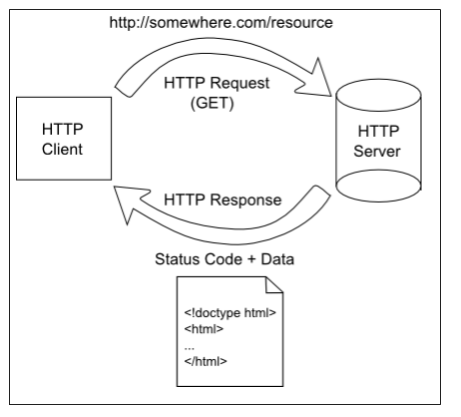Introduction
At the heart of the world wide web is the Hyper-Text Transfer Protocol (HTTP). This is a protocol defining how HTTP servers (which host web pages) interact with HTTP clients (which display web pages).
It starts with a request initiated from the web browser or other client. This request is sent over the Internet using the TCP protocol to a web server. Once the web server receives the request, it must decide the appropriate response - ideally sending the requested resource back to the browser to be displayed. The following diagram displays this typical request-response pattern.
This HTTP request-response pattern is at the core of how all web applications communicate. Even those that use websockets begin with an HTTP request.
Note
The HTTP standard, along with many other web technologies, is maintained by the World-Wide-Web Consortium (abbreviated W3C), stakeholders who create and maintain web standards. The full description of the Hyper-Text Transfer Protocol can be found here w3c’s protocols page.
